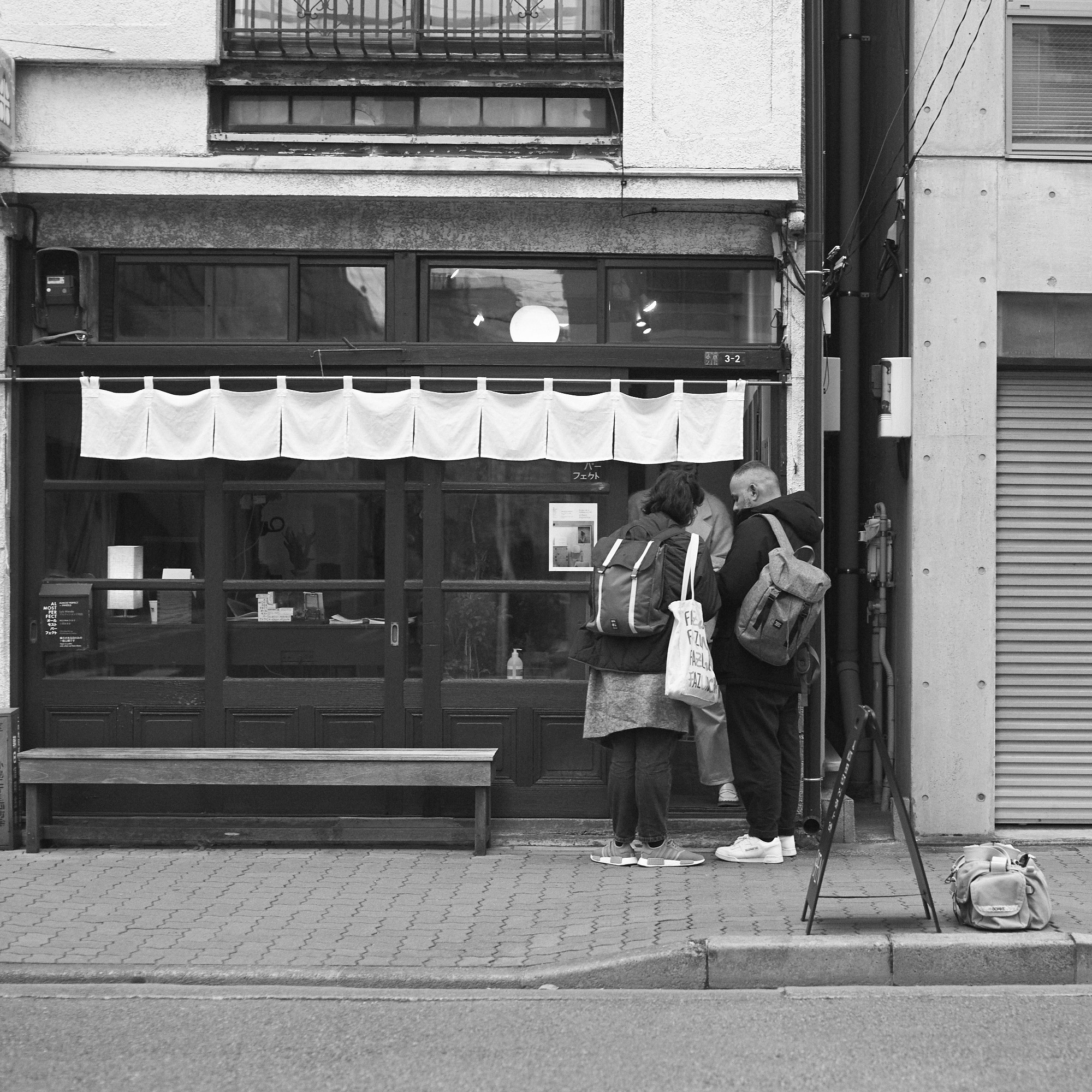portrait 009 : Mariana & Julio : paint it imperfectly, in perfect blue
2024.03.31
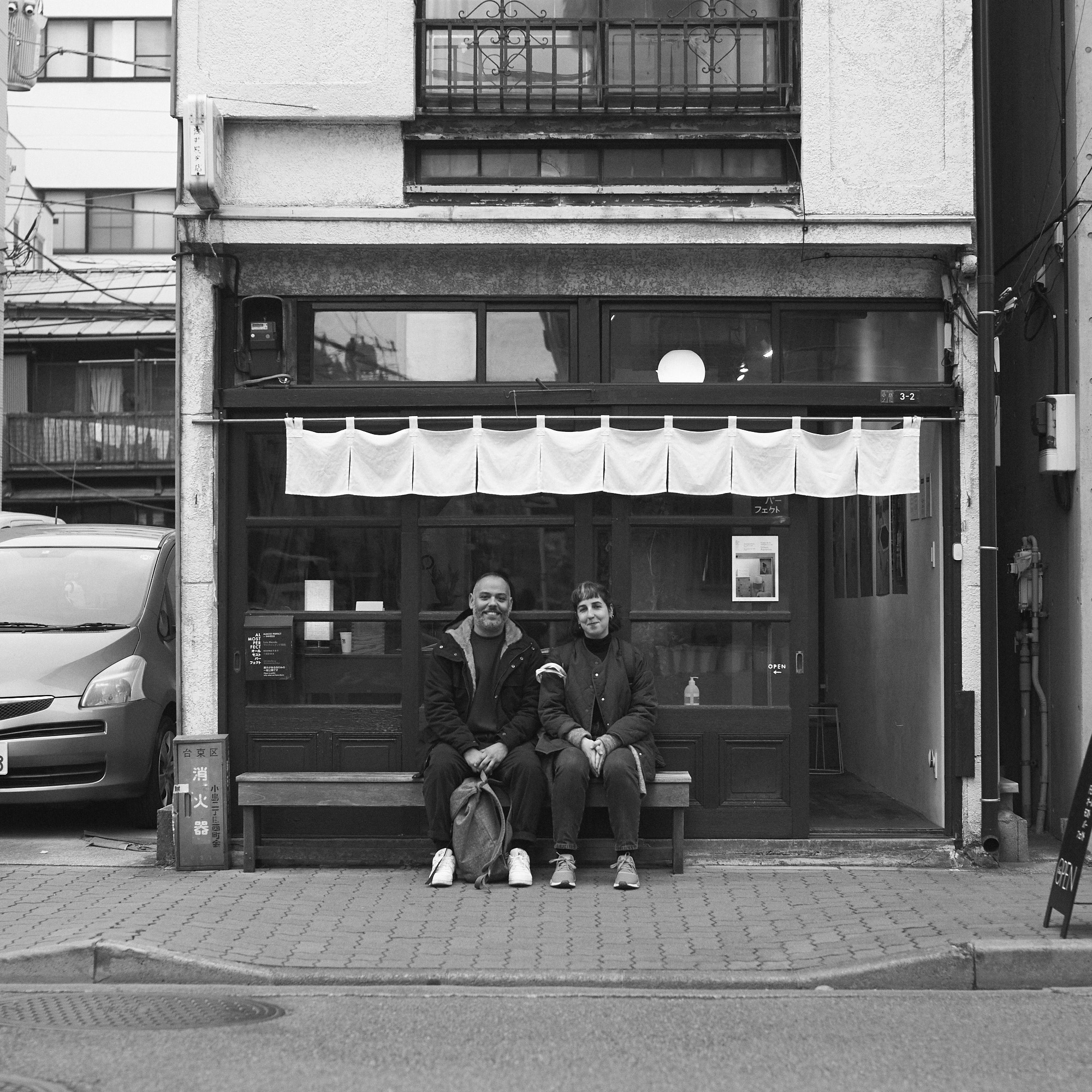
<“kintsugi”- recovering the broken pieces >
Julio (J) :
It started in 2019. There was a project from the municipality of Porto to help artists to do exhibitions abroad. We applied for that as we really wanted to do the show in Japan.
The idea of the show is from “Kintsugi”, Japanese ancestral tradition of recovering broken ceramics. We use it as a metaphor for recovering when we break things, which happen in our lives. If we glue the broken pieces with gold, that means that it would become better than before.
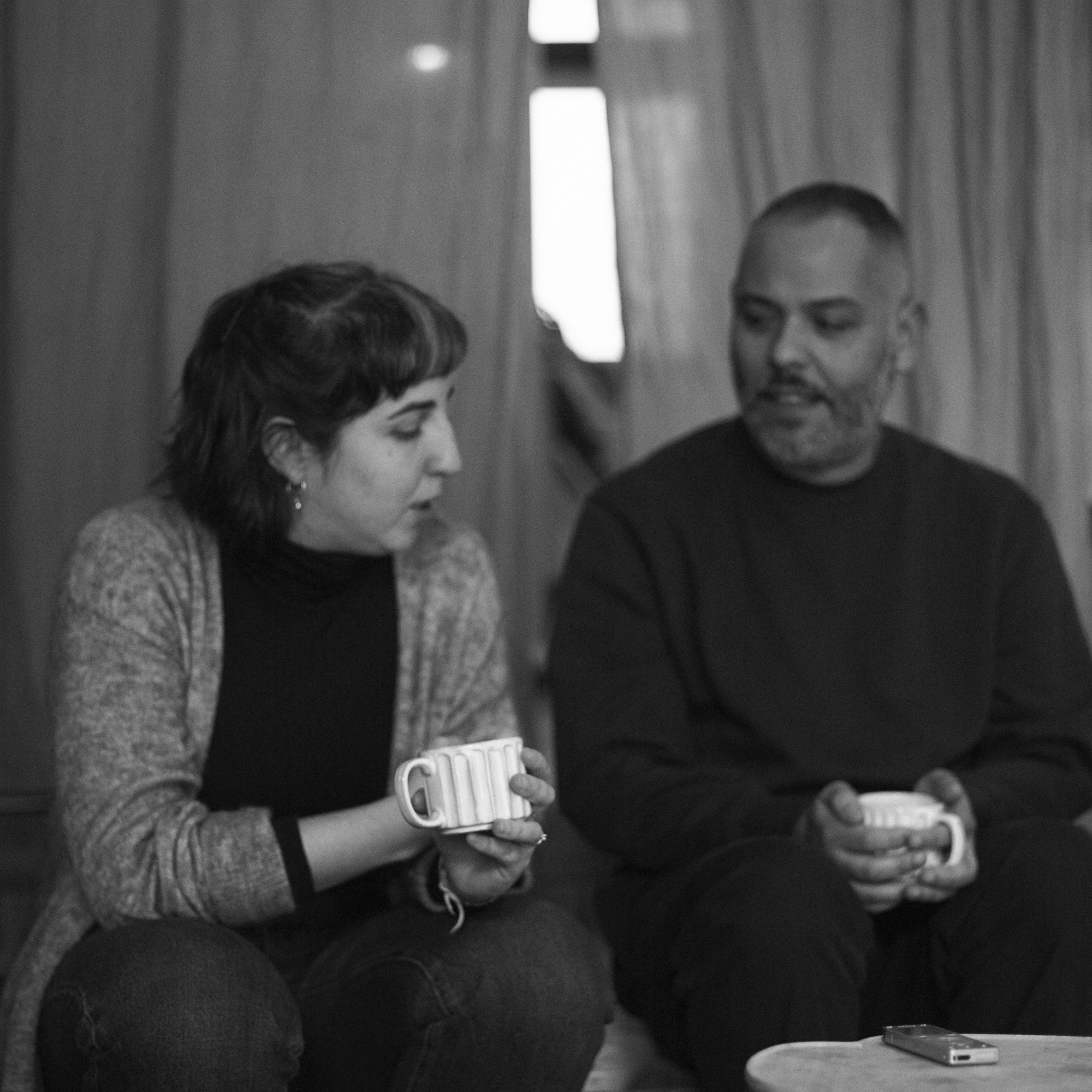
And since it was the project for a travel, we chose the Portuguese word “partir” that means ‘to break’ and it sometimes means ‘to go somewhere’. So we use the double meaning as we were leaving to Japan and at the same time, we had some scars, for things that happen in our lives that are broken, and recover it to make a better life, and become a better person.

Mariana (M):
It is a beautiful way of seeing things, that you accept the broken pieces. You don’t throw them away and just try to recover to make them more available than before. That is a kind of perfect imperfection, and we are in the gallery that is called “almost perfect” (almostperfect.jp) . It really fits in our works, perfectly. The other thing is that, with this project, we tried ceramics. It is like for the first time, not very first but we are still very green.

J : Before COVID, the original idea was to come to Japan, trying to find ceramic places where we could learn to work with it. And then we would make an exhibition in Porto and come back with the things that we learned here in Japan.
But COVID stopped everything and we had to stay home for about a year. Then we applied again for the project, and got support from Porto.
Now it’s a little different because we already did an exhibition in Porto about this idea about getting broken. Now we came to Japan to finish the project, so we show the ceramics here and then we go back to Porto bringing all the drawings that we do here. The trip is also the process as well, so we visited Osaka and Kyoto, and are doing a lot of drawings during the trip.
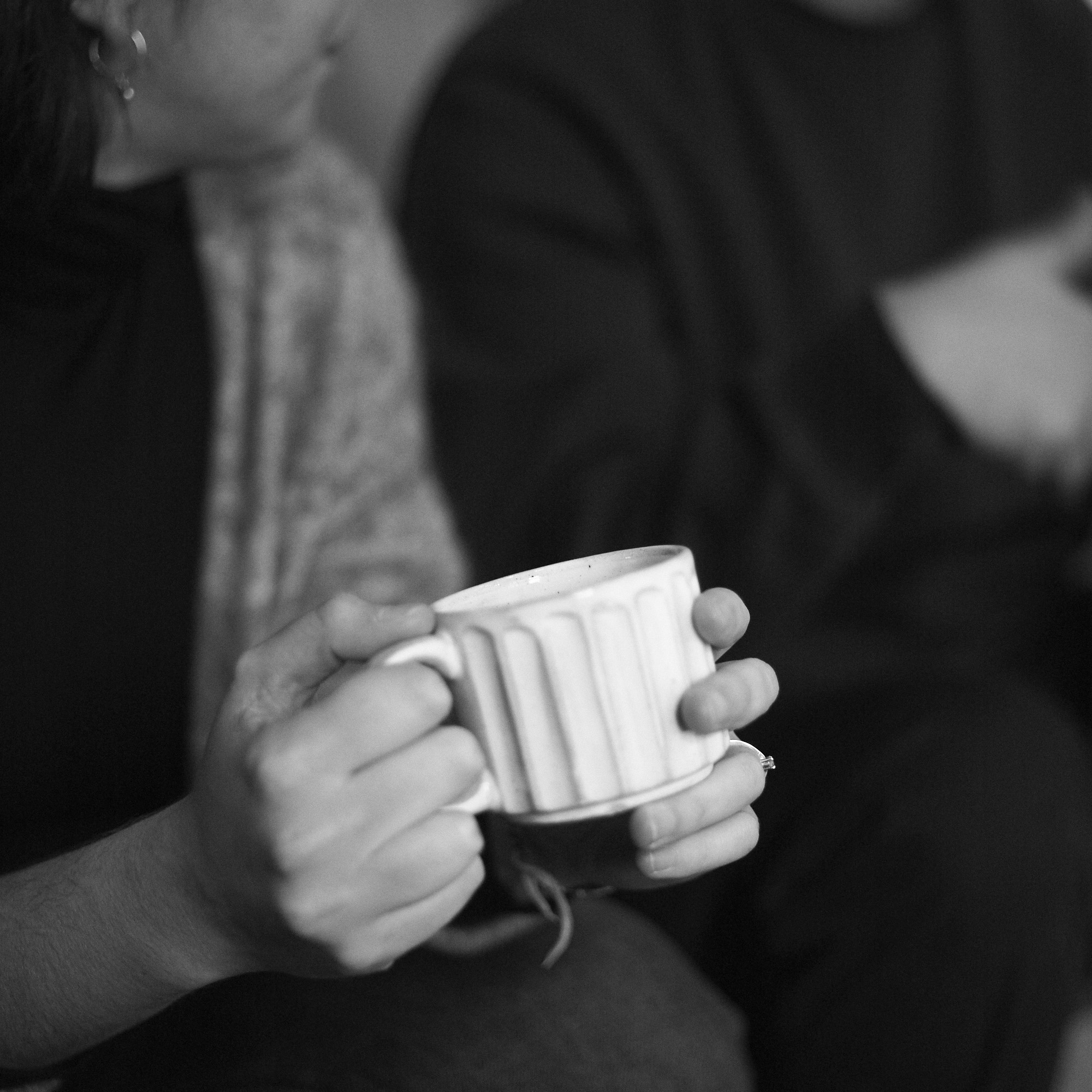
M : The preparation for Porto exhibition was like a residency before the residency. We had time to experiment and think better about the metaphor of the idea of the exhibition. We enjoyed it.
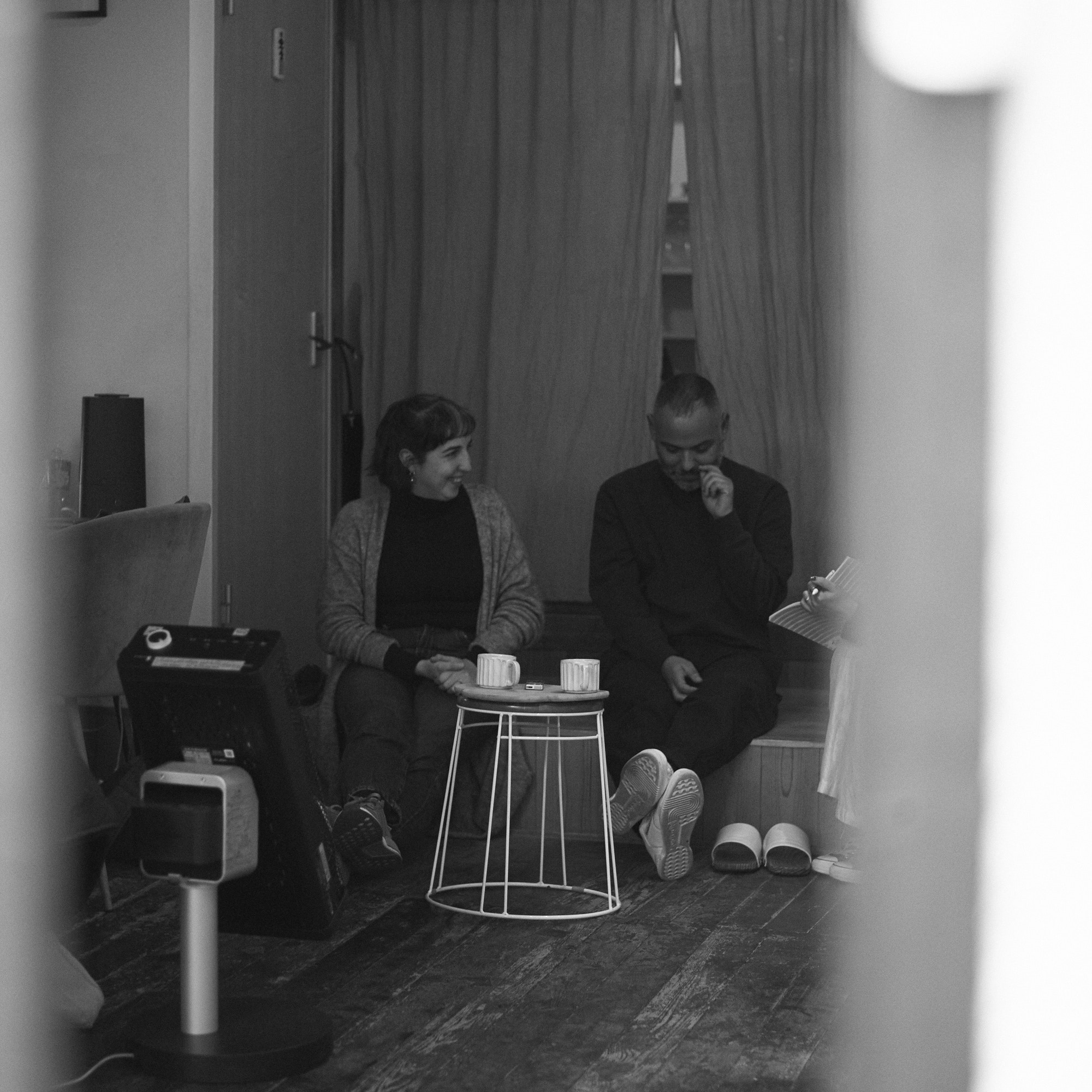
J : Basically, some of the ceramics, we didn’t break them as we wanted. At the beginning., we were thinking of breaking them and gluing them back with gold, but now we just think about it as a metaphor. So final results are not perfect, but beautiful, like you can see all the details of the hands and fingers. We tried to leave it, so you can find it, like “almost perfect”.
That’s the idea not to try to do it like if you are professional in the ceramic.
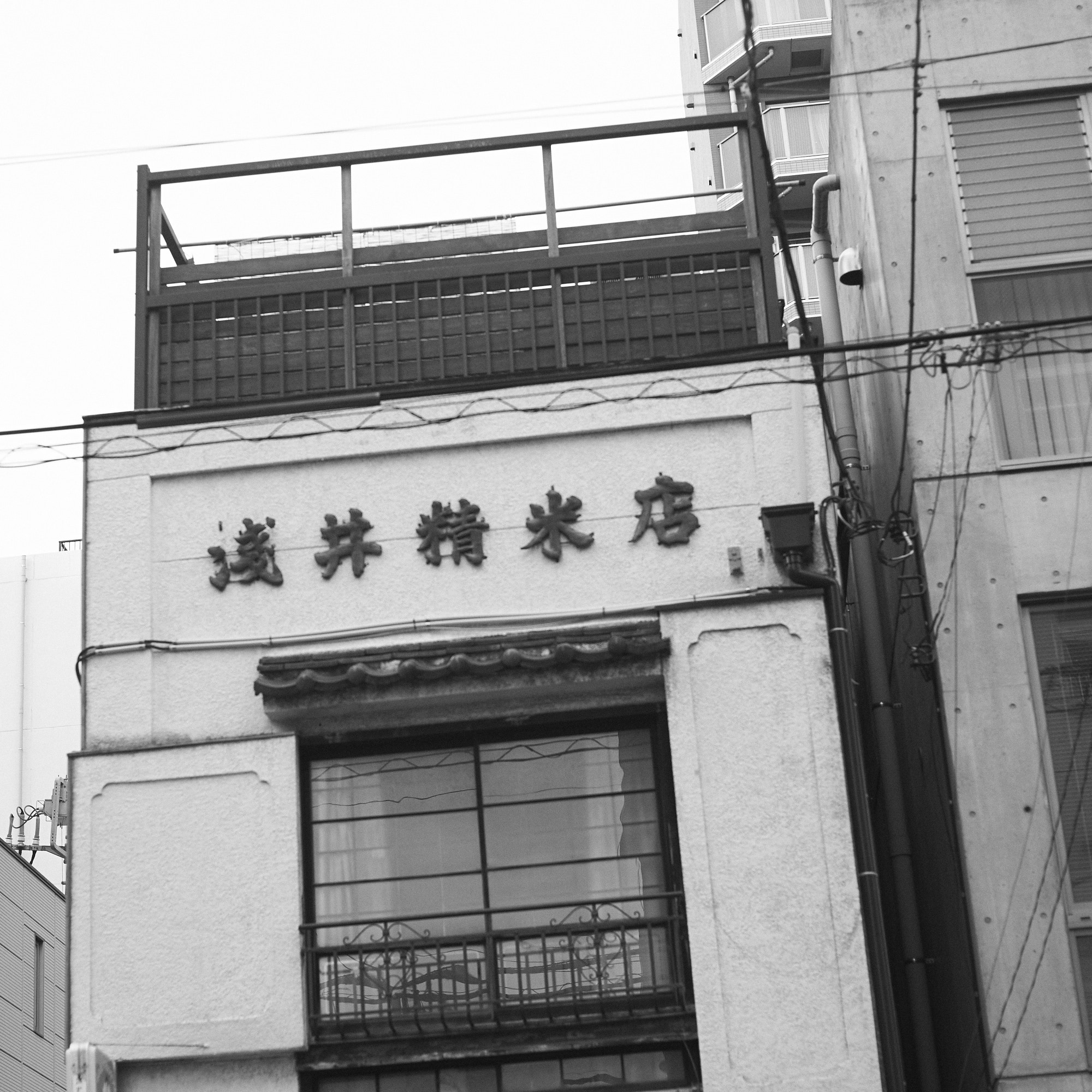

They are very breakable, it’s always a risk of breaking them.
The first pieces were actually broken in the oven.
We thought it was very literal. So we didn’t want to bring the broken pieces. We just wanted to use it as an idea, the concept.
I think the most important idea is that things shouldn’t be perfect, as a ceramist.
I hope ceramic artists don’t feel offended by our words, because we’re just trying to experiment. An extension of what we normally do. Mariana is an illustrator as well, and we usually do bi-dimensional drawings, so this is an extension to 3D.
M : You can see the link between the drawings and the pieces like tiles, and you will see the drawings are imperfect as well.
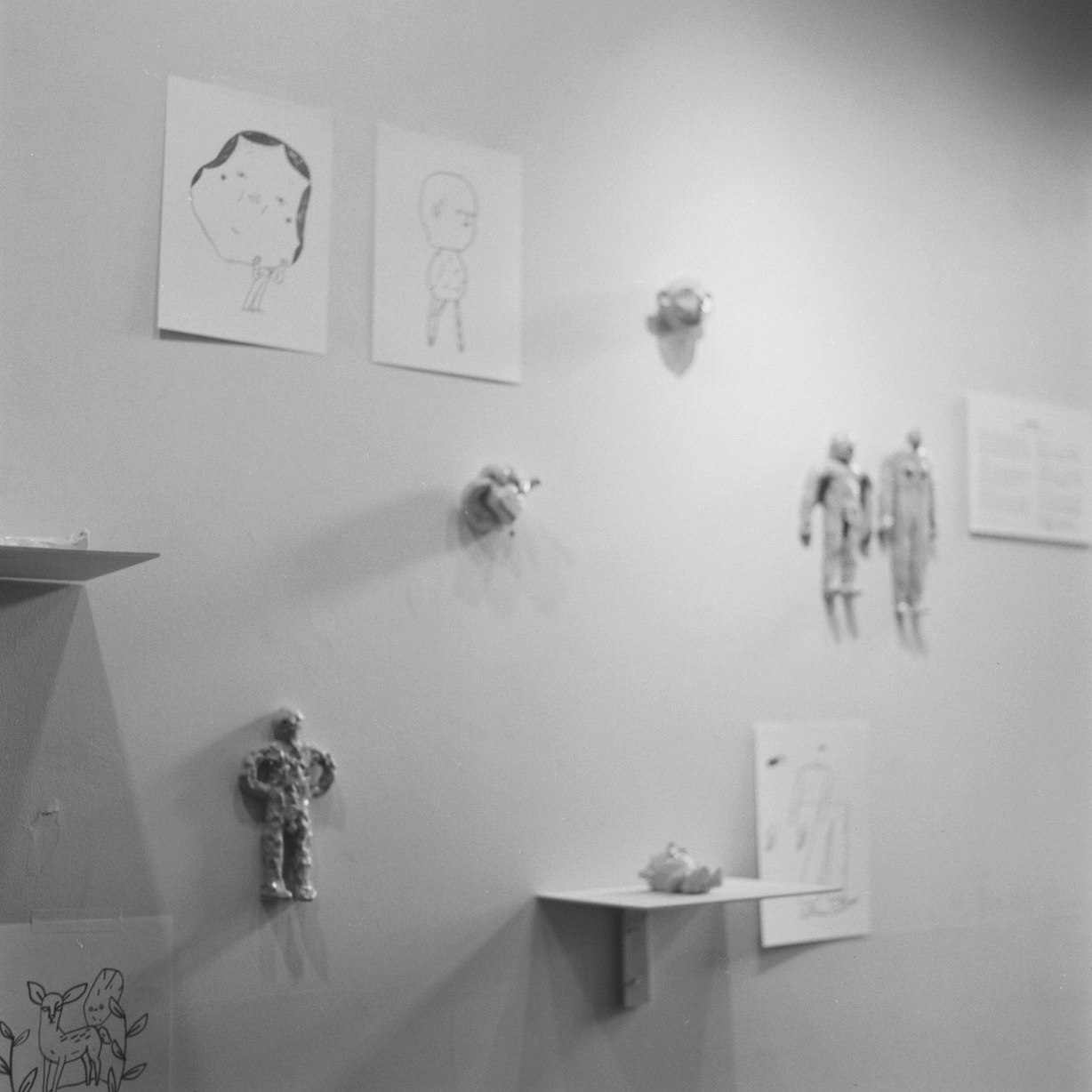
J :Mariana’s artist name is Miserable, but as you can see she is not miserable : )
That’s how she likes to draw. It’s not her personality, it’s a fictional persona.
Mariana is very shy, but when she’s talking, she’s funny. It’s funny that people say, “oh Mariana is not crying, or sad”.
When we did the exhibition in Barcelona, she was with her boyfriend, but she said “don’t photograph me with my boyfriend “. Because our exhibition theme was called “lonely hearts” and we were supposed to be very lonely then : )

M : I really like the idea that we have the right to be sad and happy. Because we are humans, we are vulnerable. I like to talk about it in my work and it’s not just a name, it’s a theme of my work in general. So the exhibition is a little bit about it as well. Like, we have flaws and we break and we come back, and stand up again.
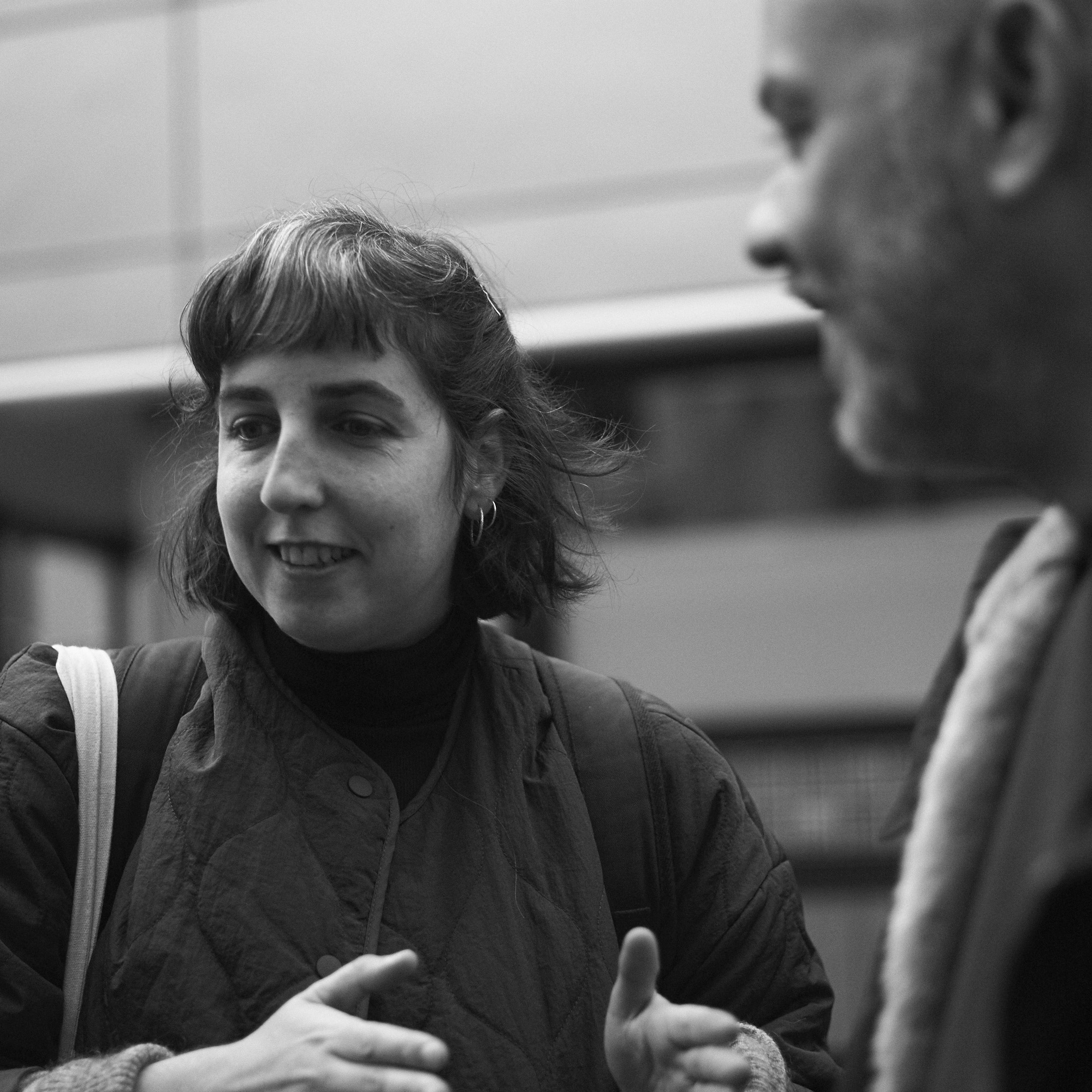
J : For the exhibition, we made things separately, but did a lot of work together as a team. We share ideas and concepts. We make decisions together, like sizes, materials and techniques, but still have our own identity. For ceramics, I did all the boys and Mariana did all the girls. The boy is kind of extension of myself, so maybe it’s me when I was young.
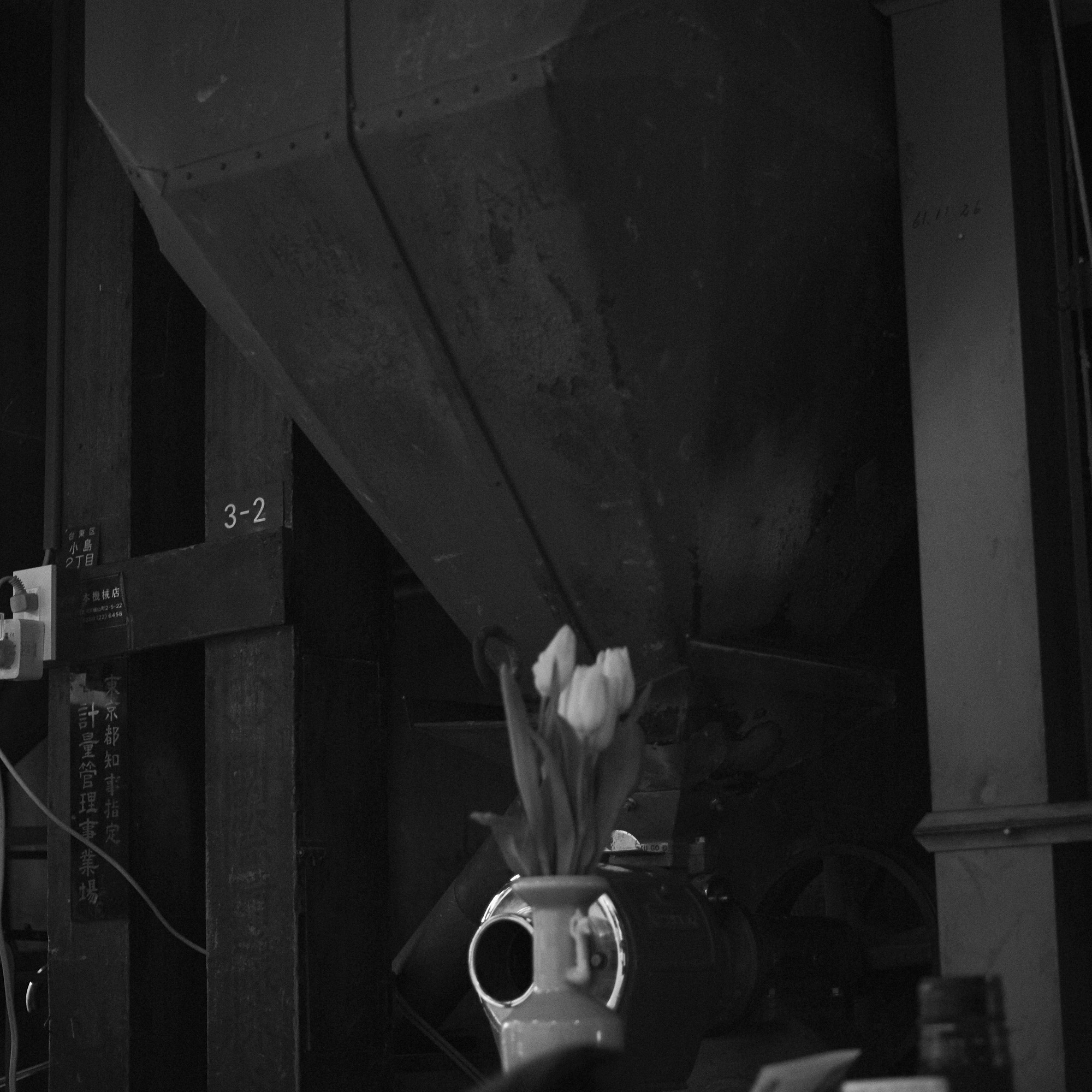
We do a lot of work independently, but like to work together for this project. We had support from some studios in Porto. They gave us the opportunity to be there developing our work, and use their ovens. And another studio GAZETE, they have studios where they actually recover traditional tiles Azulejo that are broken. If you have a facade on your building, and you have old tiles that you want to make them the same, they can do that for you.
There is another one “O’CERAMICA”. They helped us to make pieces.
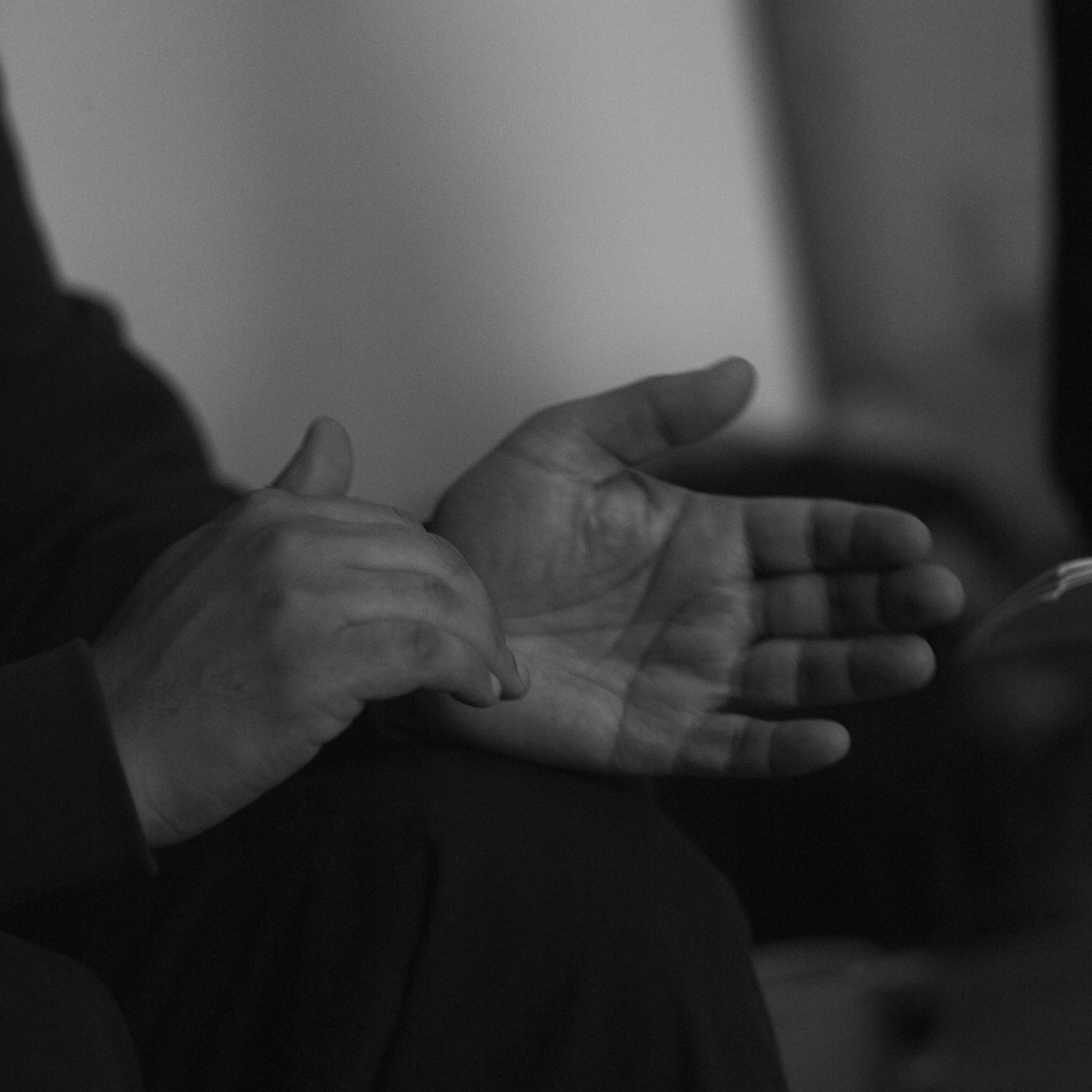
J: I am very happy to work with ceramics, I think that we were welcomed in Porto with this project. Our exhibition in Porto was supposed to be after Japan, but because of COVID, we did the presentation in Porto first, which was already scheduled. We had a lot of good feedback, so we are happy and maybe will continue to work with ceramics.
M: Ceramic is a good medium. Another medium for another way to express.
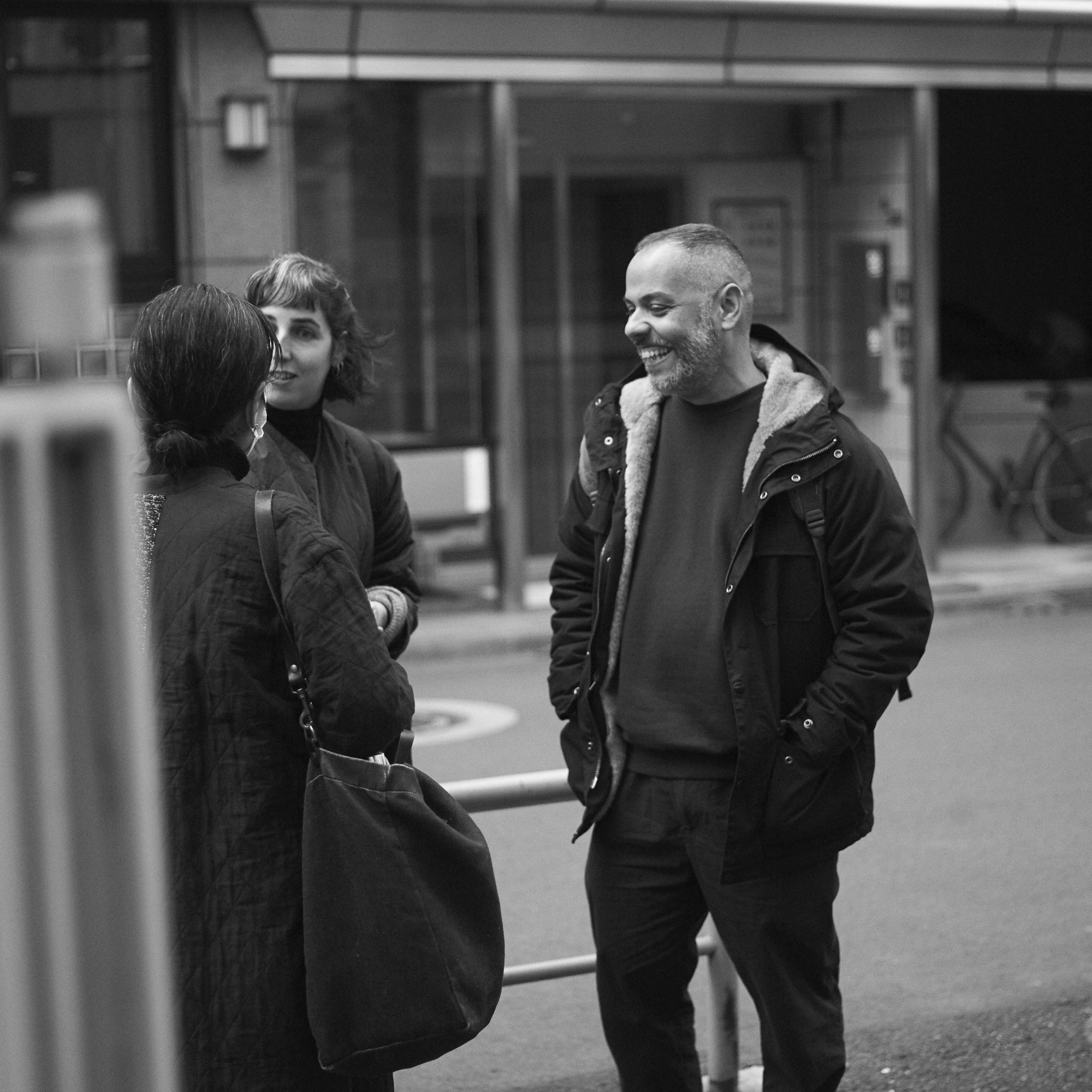
<working as a team>
M: Julio was my teacher. I already knew his work and was an inspiration for me. In 2010 and 2011 I did master of faculty of fine arts in Porto and I met him in my second semester, and we exhibited together, and did first show together after 2 years.

J : I don’t work with my students, It’s because it is like I’m privileging someone over the other so I always have the same relationship with everybody. Some of the students become artists when they finish their graduation and eventually we do things together like exhibitions. For instance, the owner of the Senohra Presidenta (https://www.instagram.com/senhorapresidenta/), I told her “you should do this gallery with some friends” . Three artists started up as co-owners of the gallery, and two of them are my students. I used to have gallery, so I know what to do. So I tried to help them in the beginning and now they have their own gallery and we do projects together. After graduation they become artists and sometimes it’s inevitable to work together.

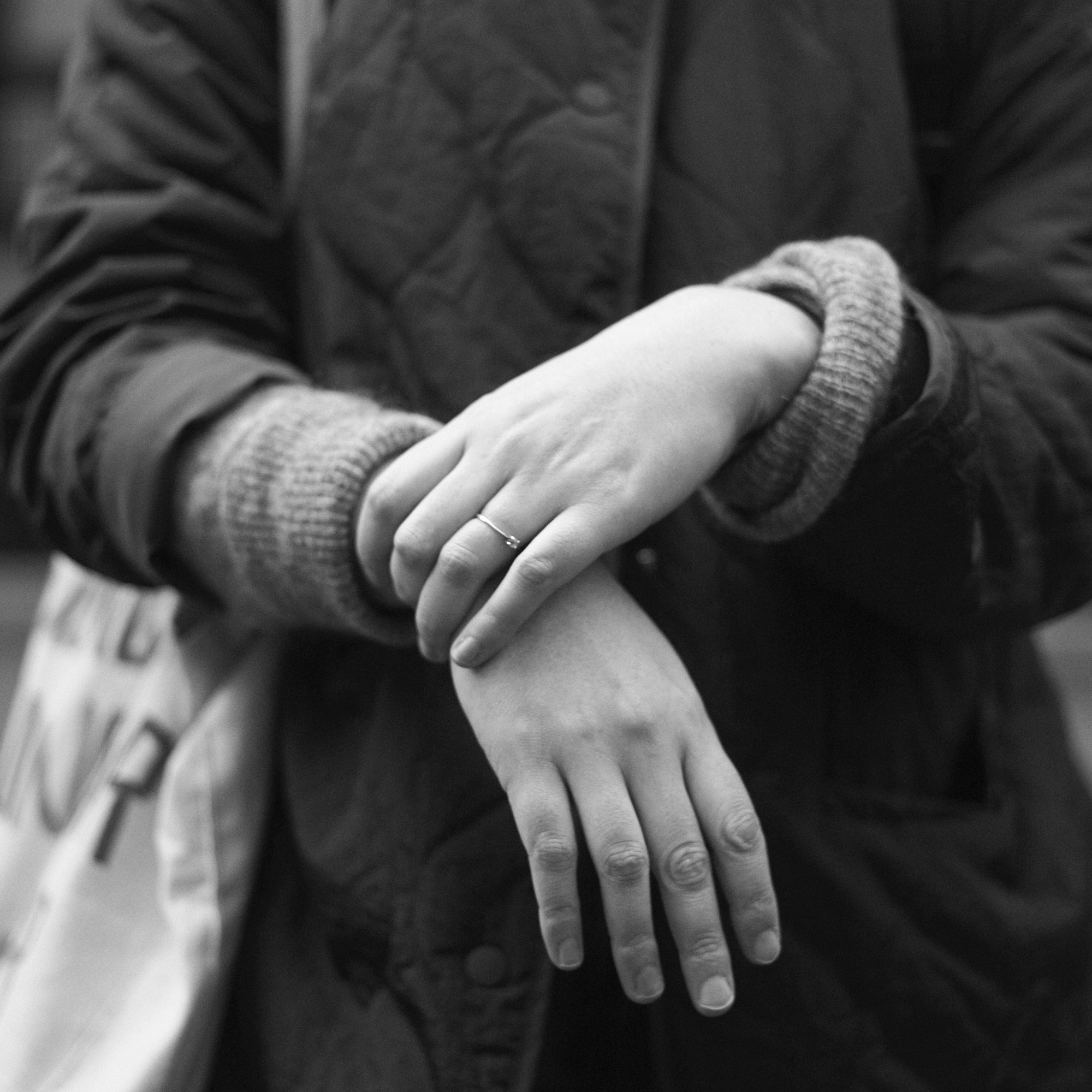
M: We all know each other. Through collaborations, they have skills to help making your work shine. It’s nice to work with the other artists, as sometimes it’s a little bit lonely to work as a freelance illustrator.
J : I am a teacher so I have the studio work and the teaching work, so for me, it’s okay, but I can understand that being just an artist is difficult. Sometimes you have to talk and share ideas.
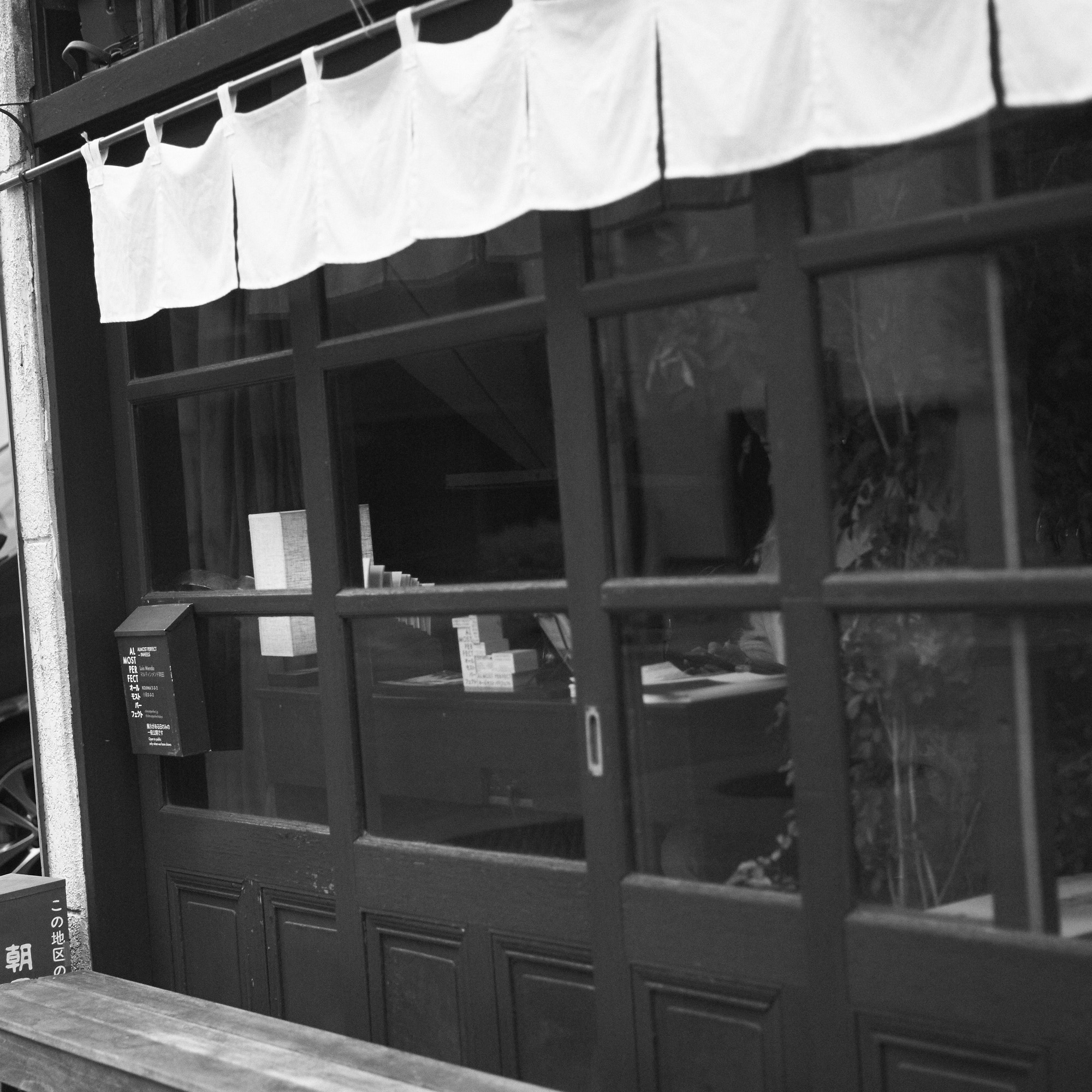
<artisanal ceramics in Barcelos>
J : We were also invited to bring our ceramics to the show in Barcelos, for the event talking about contemporary ceramics with traditional ceramics. It’s an area where very specific characters are well known in that region. I was a little bit nervous when I got there because I thought I would feel imposter syndrome as there were amazing ceramists showing their works and I was showing the work that we just started 2 years ago, but it was OK.
M : They were like our references to start to make ceramics because it’s a strong tradition in Portugal.
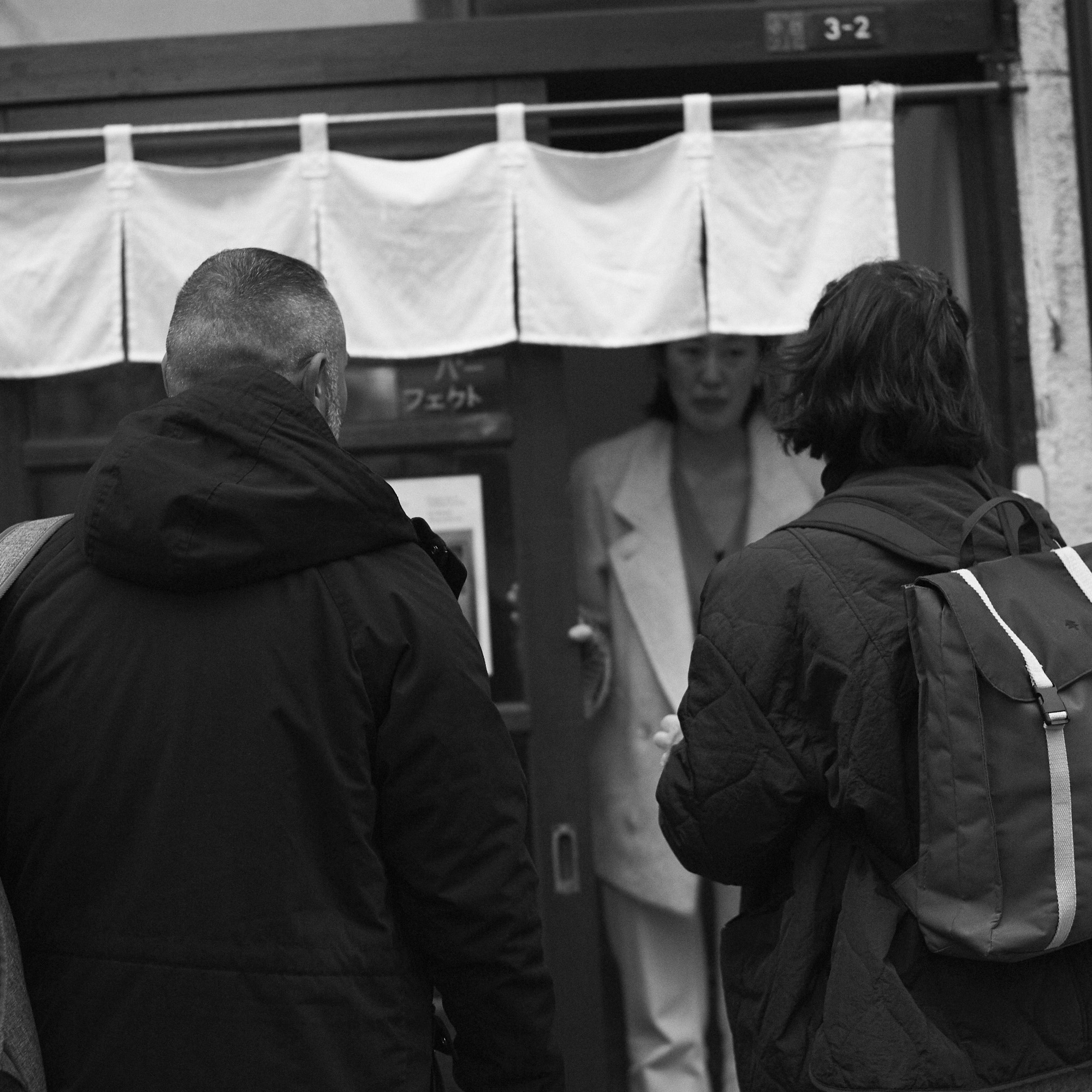
J: Rosa Ramalho is the first woman in Portugal who signed ceramics as an artist, because ceramics were not recognized as an art. Rosa didn’t know how to write or read, so she wrote 2 Rs to sign the pieces. Her granddaughters and grand-grandson continue her work. She was a huge reference for us.
People found her like a very old lady doing ceramics and put her work in a museum or in an exhibition. And it was like the first time in Portugal that people were looking at this artifact as a major art because there was, still the prejudice, there’s a high art and low art. I think you don’t have it in Japan. You recognize your artisans.
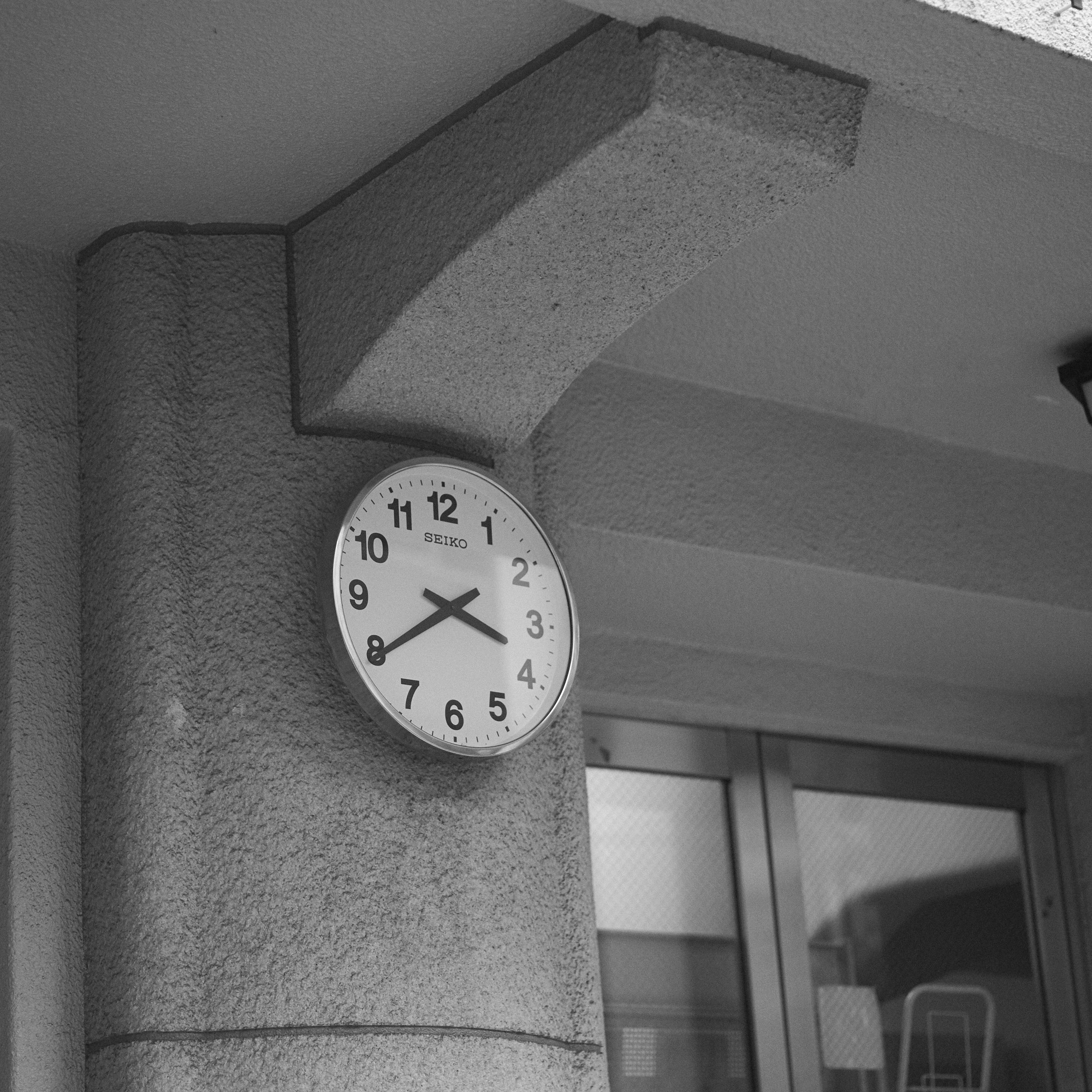
I think in that period, beginning of the 20th century, only men could do the things that are useful and the women used to do small puppets and characters that were not useful, so she was doing that for her. Someone looked at her work and thought now this is amazing. She’s an artist. So they started to become very precious and valuable. She is our most important reference for the whole project.
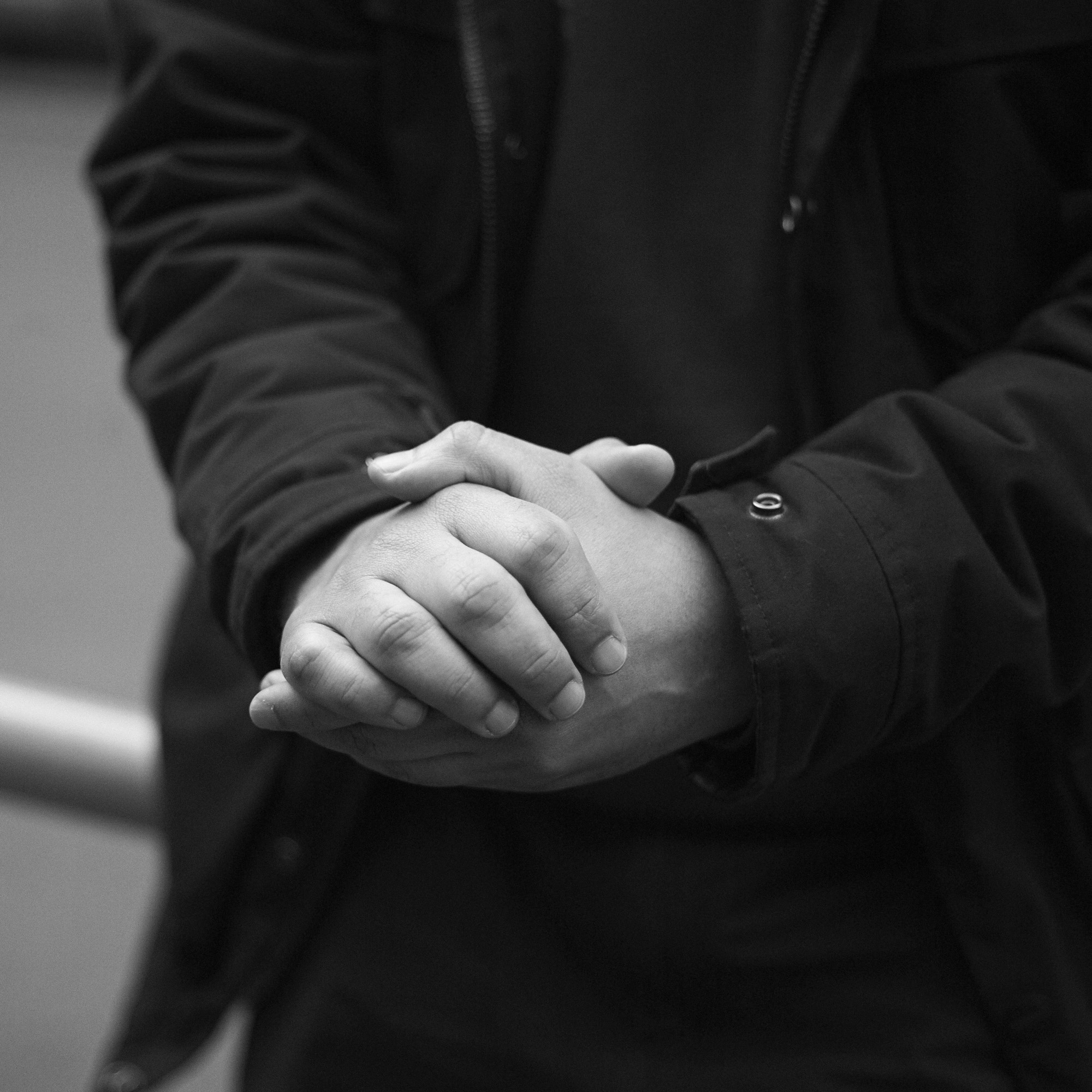
< things with a history, a story to tell >
J : I think we are going to do other projects together because I think it’s very easy to make decision with her, though sometimes our works are a kind of complicated things to decide. We find it very inspiring to work together.
M : I think we like the same thing. Like this exhibition, we wanted to break pieces, but now we never want it as it is looks like a fake. We think that the Japanese tradition is beautiful and inspiring, and we don’t have that kind of things at home.
J : We are moving into consuming age. We are always trying to buy something new. And the idea that you can have something that has a history and a story to tell, and if it’s broken, the story becomes more complex. For us it’s very nice way to see things like that.
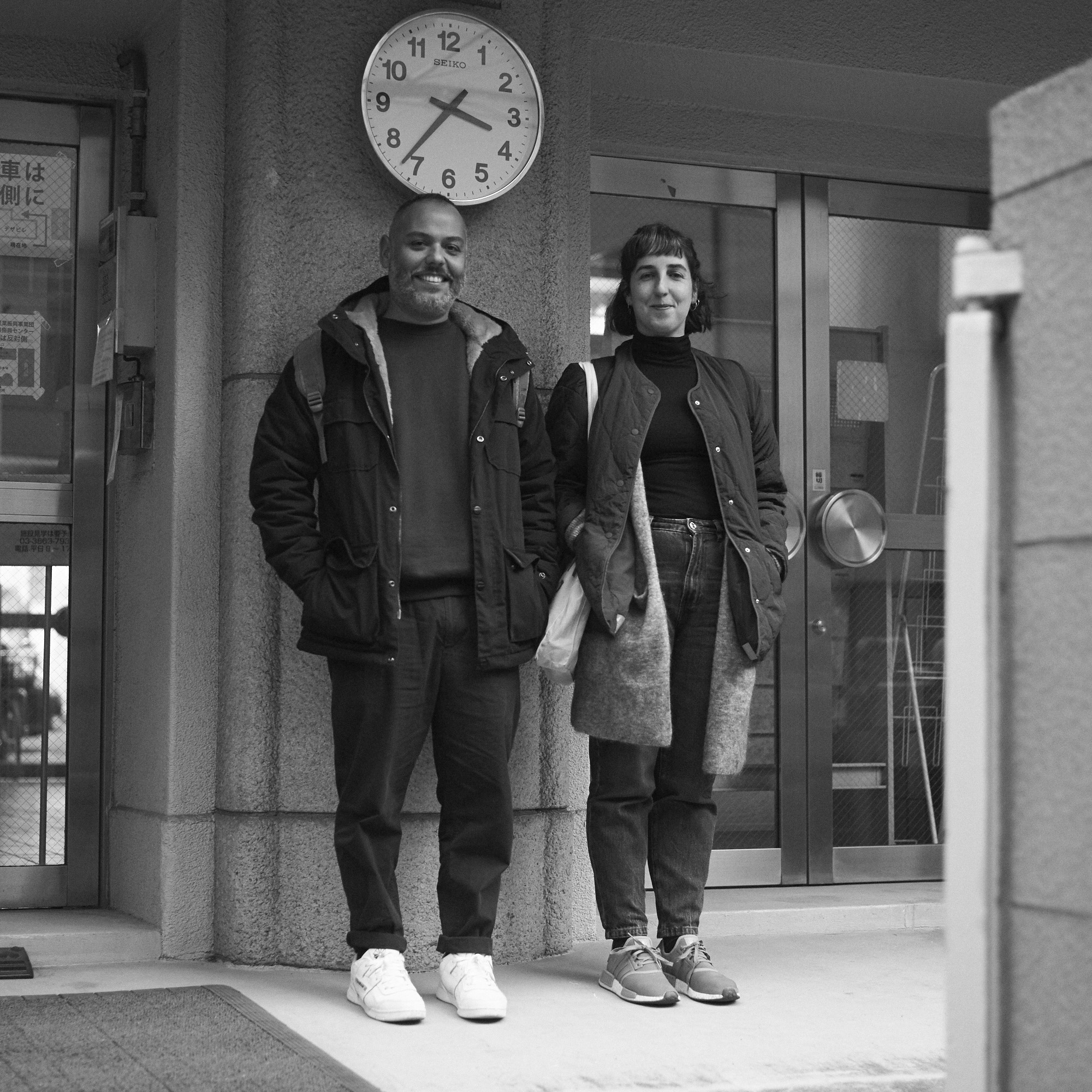
<The colors of us >
J : I think I am cobalt blue. I don’t know why. I think it’s the color I wear most, and I like the indigo, Japanese blue.
M : I think it’s not a permanent thing. It’s a cycle, like for 3 years, and I am changing. Right now, I’m cobalt blue because I’m really connected to the tiles now in the color. I think it is the most beautiful color of the tiles. I really love it.
And it’s also the color of the city. Porto is blue.
<Question from another contributor : 008 Ami/Ken>
If you use 3 colors in combination, what do you choose ?
J : Blue, red and grey.
M : Blue, lighter blue and grey. When thinking about tiles, it comes to blue, but for drawings, I use grey a lot.
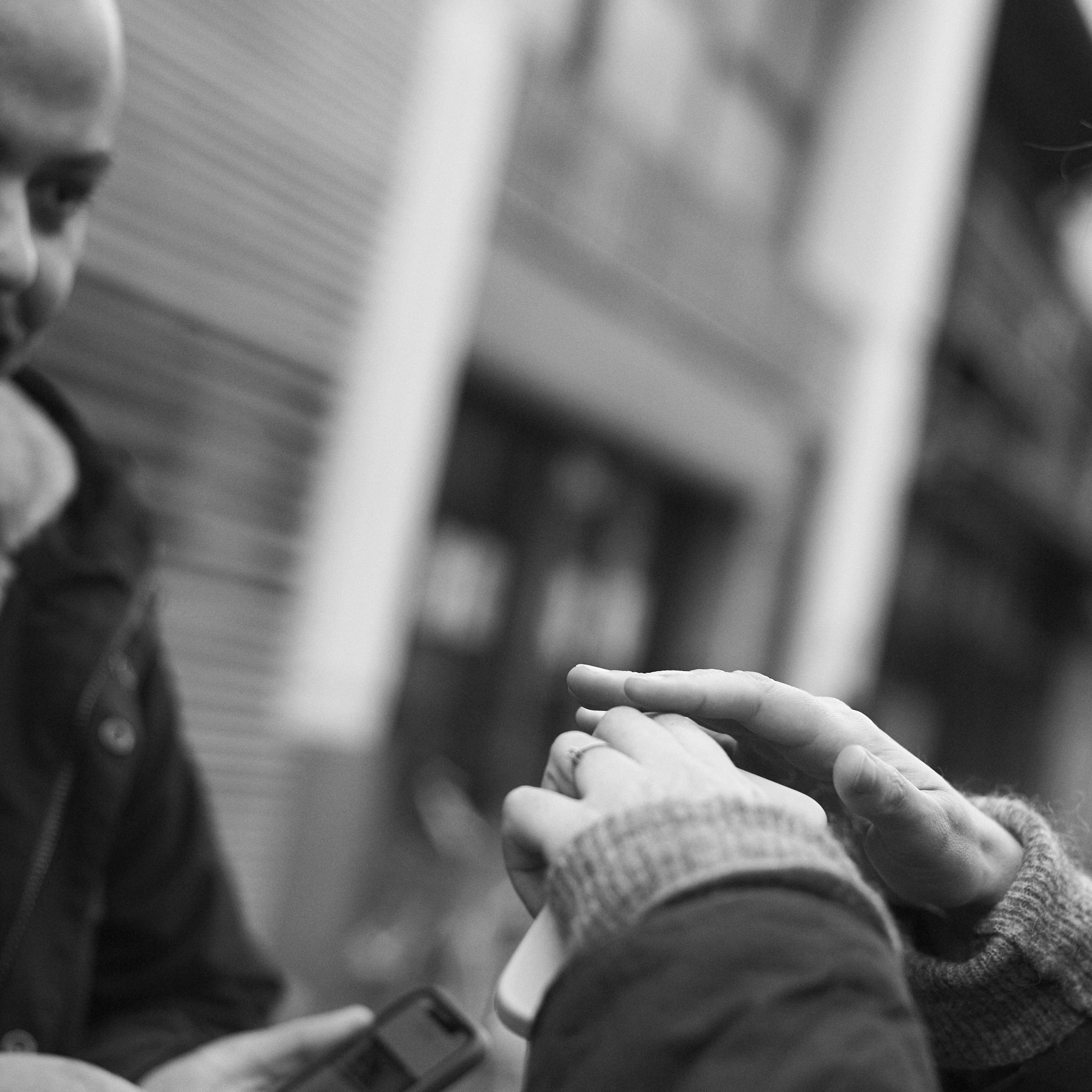
< Question to the future contributors >
J : Which artist would you like to do an exhibition with ?
M : Where do you think imagination comes from ?
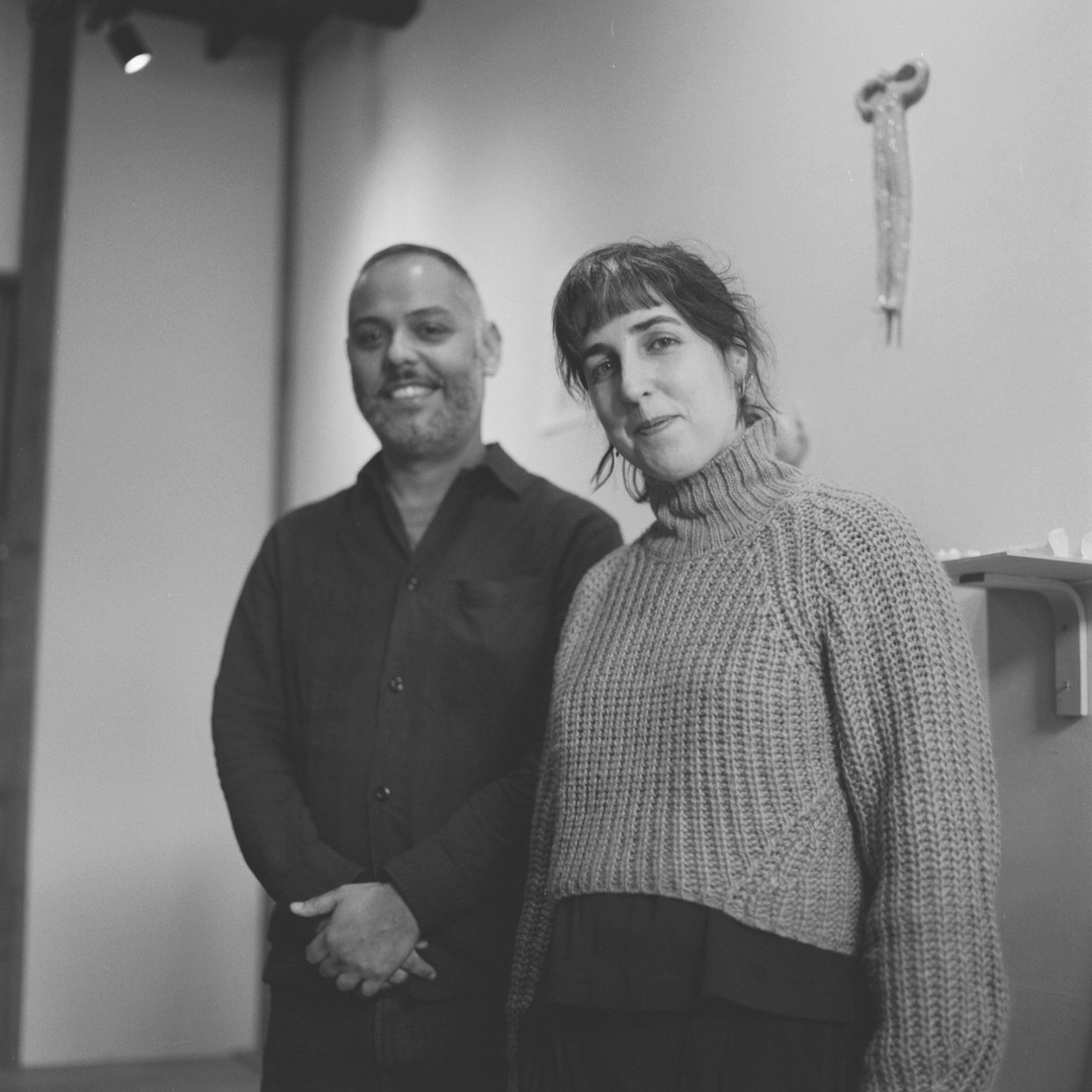
***********************************************************
About Mariana and Julio :
Mariana Santos, better known as “Mariana, a miserável”
https://marianaamiseravel.com/
Julio Dolbeth
Photographer : Masa Hamanoi
January 2023, when they were in Tokyo for the exhibition “PARTIR” at Almost Perfect Tokyo (https://www.almostperfect.jp/)
Thank you so much for sharing your time in Japan, Mariana and Julio. It was the moment to feel the appreciation of having friends, getting together, and sharing thoughts with laughter in peace. Huge thanks to Yuka san / Almost perfect Tokyo for your generosity to allow us to do the interview there, and to Masa for the great photography through his friendly eyes, as ever.

